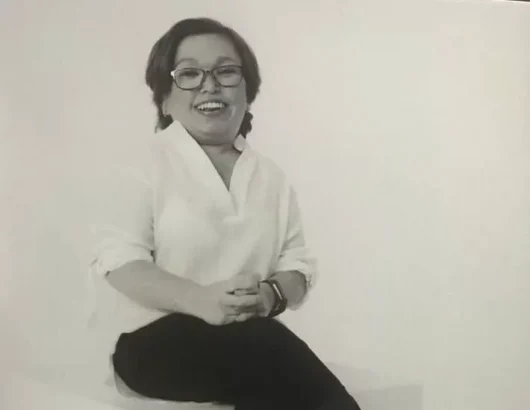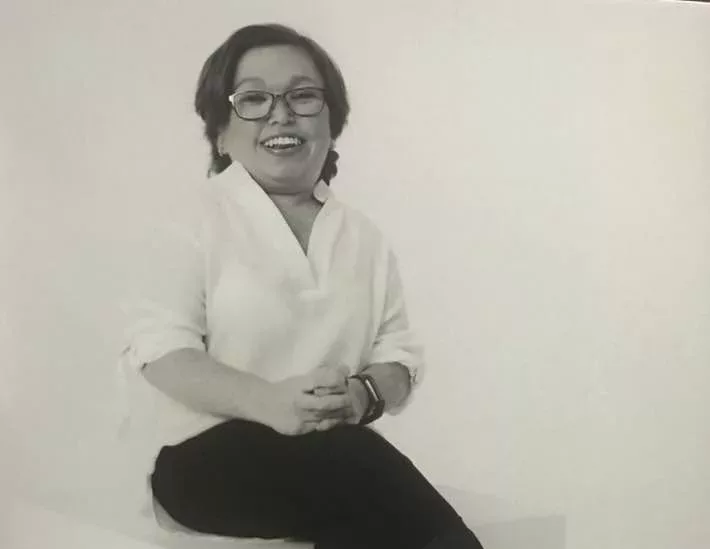For the longest time, Samantha lived with her family in homes that had no semblance of accessibility for the 36-year-old to get around independently. “The kitchen was always inaccessible, so we had to have various step stools around the house. If I wanted to cook something in the oven, I struggled because it was either too high or too low for me to safely use independently,” she recalls.
Samantha explains, “I was born with an ultra-rare genetic condition that has had a significant impact on my physical abilities throughout my life, as well as resulting in my short stature.”
However, two years ago, life changed when a friend, who works in the disability sector, told her about Specialist Disability Accommodation (SDA).
My SDA journey
For Samantha, getting herself approved for an SDA Fully Accessible home became her mission. A home that met not just her current needs, but future needs as her condition progressed. “It was also incredibly important to me when I began my SDA journey to maintain my independence and live on my own. I have a large family and as an aunty to 8 amazing nieces and nephews, I love being able to have them come and stay with me in my home on weekends, something that would stop if I had to live with others.
“The life I have always led would stop and so making sure I advocated for myself and maintaining the lifestyle I have with my family was important.”
In 2022, after a long search, Samantha found the perfect home. “A one bedroom SDA villa in Nundah that is big enough for me, for my homebody cat Enzo, and for those visits with my family when they are in town. I have a great little private courtyard where I can grow my own herbs and do my art. I’m close to the hospitals that I regularly attend and can access all the shopping and facilities I need around me easily,” she says.
Living independently with SDA
Keen to dispel the misconception that a person needs Supported Independent Living (SIL) with SDA, Samantha says, “When thinking of a house for disabled people, a lot of people might think of group homes, but that isn’t only what SDA has to be. SDA is a design concept based around the needs of the person or persons living in the house.”
She adds, “So, if you’re like me and use mobility aids some of the time, having wider hallways and doorways is a standard feature in an SDA property. Having benchtops that are lower so that if I am in my chair, I can still reach the stove safely. Having bathrooms that are accessible so if I need to use a shower chair, I have the room to do so. I need less in the way of physical support in my SDA villa because it’s built to accommodate the needs that created those barriers to independence.”
Samantha underlines the importance of the right support, information and advocacy to enable more people like her to live independently. “For a lot of people in my situation, the idea of living with someone because of some arbitrary decision made for you is incredibly off-putting. Sadly, this is why a lot of people are feeling discouraged from exploring the option of SDA.
“With the right support, advocacy, and evidence you can demonstrate why living on your own is the best solution for you. With the increasing number of models with shared On-site Overnight Assistance supports allow people to live in their own space, among their community, without giving up that independence that we have fought hard to gain.”
Self-managed NDIS plan and support in the home
As for the support she needs from people in her home, Samantha wanted to maintain the support team she’s had. “This means I am able to continue using my core funding for support workers that I found through Mable. They come to me on the days I need them and help me with my meal preparation and things around the home. They also get me out of the house to appointments, or to some of my favourite activities. For now, I don’t need overnight supports, but if that changes in the future, we can look at how to manage that.”And as she’s self-managed for most of her plan, Samantha takes care of most of the invoicing.
“The SDA funding for my villa, though, is all managed directly by my Support Coordinator, the NDIA and the SDA Provider, so as a participant, I didn’t have to worry about that side of things which is a relief.”
What the NDIA could improve
“I’d like to see a greater emphasis on transport access and support to access for participants. The choice to be a wheelchair user is not one most people with disability have made themselves. However, there is an expectation that these people can just make do with public transport or alternatives of the like,” Samantha says.
“The NDIA must work in conjunction with the transport industry to ensure that those who need transport are properly supported so that they are able to leave their homes to access therapies and the community.”
Key lessons on the SDA journey
For Support Coordinators
“It’s vital for Support Coordinators and Occupational Therapists to understand the needs of their participant and advocate, not just for what they need but also for what they want for themselves”, says Samantha.
“SDA isn’t this scary, impossible desire, and if your participant really wants to explore living options, reach out to SDA providers and the Housing Hub, who are more than happy and skilled to talk through the options and how to navigate the process successfully,” she says.
“When applying for SDA, be specific, repetitive and confident about the participant’s right to choose the way they live. Be realistic but support their efforts to explore this. And most importantly, if you don’t know how to go about it, ask someone like me. My goal is to see as many people living with disability, who need specialised housing models, living their best, most accessible, and happy lives in SDA homes.”
For participants
Samantha suggests asking for Support Coordination if participants are unable to manage on their own or don’t have a support network. “A good Support Coordinator can help you develop the support network to keep you going. You can also reach out to advocates, who can help give you the voice by listening to what you need and helping you to access the services to have those needs met,” she advises.
“Don’t be afraid to ask for help, to ask questions. Expos are an excellent source of information and networking.
“It can be overwhelming at times, but I find making notes about the things I don’t understand so I can find the resources to answer those questions is really helpful.”
Samantha also suggests exploring events platforms such as Eventbrite for information sessions in the community with providers, meet up and networking events to help participants, their families and providers learn more about the NDIS.
About the author
In 1991 Sam was diagnosed with a rare lysosomal storage disorder called MPS Type VI (Maroteaux-Lamy Syndrome). Her passions in life fall into two categories – professional – helping her rare disease community achieve access to all the same opportunities as able-bodied people, mixed with a healthy dose of personal love for travel. She has spent the best part of a decade helping those not only in my MPS community, but the rare disease community in volunteer roles.
She is now working with Victorian-based company Empowered Liveability who are in the SDA housing sector as the Relationship Manager Qld.

